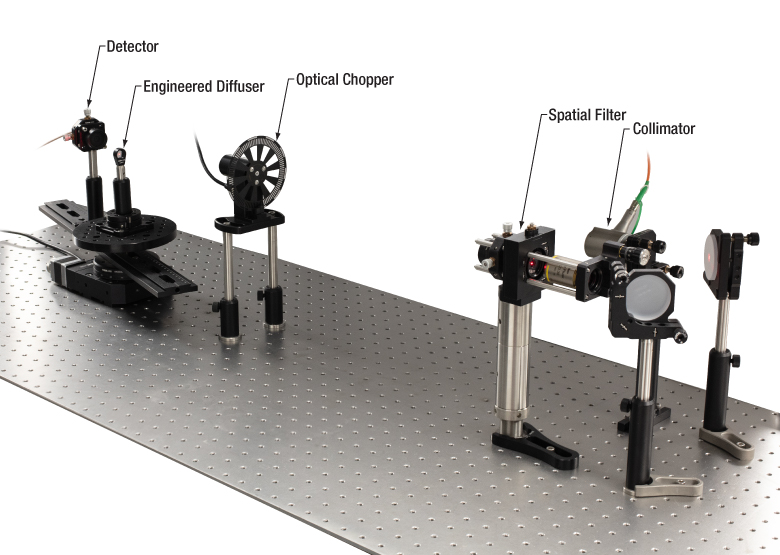Optical diffusers are the optical components that act as thin filters and homogenize the input beam’s radiance pattern. The main function of optical diffusers is to scatter light in a controlled way to ensure uniform illumination across a certain area. There are plenty of industrial applications, including medical diagnostics, imaging systems, and projection displays that require consistent light distribution. Optical diffusers are vital in these applications to improve visual performance and reduce hot spots. As optical diffusers can transform the source’s natural emission pattern into a different pattern, they perform in aggregation with light sources.
Different Types of Optical Diffusers
- Microlens Array Diffuser:
A microlens array diffuser consists of a series of very small accurately arranged lenses. These optical diffusers are used to evenly distribute the light across a specific area and by scattering the incoming light beam in a controlled way. This optical diffuser is a light-shaping diffuser that uses the principle of optics or geometrical to attain the desired beam transformation. Microlens array diffusers have critical applications in projection displays, laser systems, and medical imaging applications.
- Ground Glass Diffuser:
Ground glass diffusers consist of a rough glass substrate that is produced through mechanical or chemical processes. This glass substrate causes the scattering of incoming light beams through refraction and diffusion. A variety of scientific instruments, lighting systems, and photography use this optical diffuser for controlled light dispersion.
- Plastic Optical Diffuser:
Plastic diffusers are excellent alternatives to ground glass diffusers because of their cost-efficiency and lightweight. This optical diffuser is usually made from acrylic or polycarbonate. Some common applications of plastic diffusers include LED lighting, consumer electronics, and automotive displays, due to their flexibility and durability.
Apart from these optical diffusers, some advanced diffusers have been developed in recent times, such as prism-based diffusers, hybrid diffusers, holographic diffusers, and wavelength-specific diffusers. Prism-based diffusers use prism-like surfaces to scatter light and produce uniform illumination, whereas, hybrid diffusers combine both refraction and diffraction to evenly distribute light. Similar to microlens arrays, a hybrid diffuser also consists of an arrangement of lenses, yet it has an additional diffractive component. Holographic diffusers are diffractive optical elements that follow the principle of diffraction to homogenize the input beam’s radiance profile.
How Do Optical Diffusers Function?
The purpose of the optical diffusers is to alter the incoming light beam’s wavefront and ensure a more homogeneous light distribution. To do that, optical diffusers may use different optical principles, such as diffraction, refraction, and scattering. There are several factors that can influence the efficiency of diffusion, such as substrate material, coating, and surface structure. The durability and optical performance of the optical diffuser can differ depending on the substrate material, such as glass or plastic. The coating on the diffuser also plays a crucial role in improving light transmission and reducing unwanted reflections. Different optical diffusers are sensitive to different wavelengths. This is why a particular optical diffuser performs optimally at specific wavelengths.
Notable Applications of Optical Diffusers
Optical diffusers are used in various fields, including medical imaging, display technologies, laser systems, and optical instruments. In medical imaging, optical diffusers help improve the imaging system’s accuracy. LCD and LED screens use optical diffusers to achieve uniform backlighting. Various laser systems include optical diffusers to control the shape and intensity of the incident light beam. Optical instruments such as microscopes and spectrometers include optical diffusers to improve light distribution. Modern advanced optical diffusers like broadband hybrid diffusers are useful for various applications, such as LIDAR, advanced spectroscopy, medical diagnostics, cinema projection, and laser shows. Advanced optical diffusers also have crucial applications in high-performance optics, ultraviolet (UV) sterilization systems, and energy-efficient lighting solutions.



